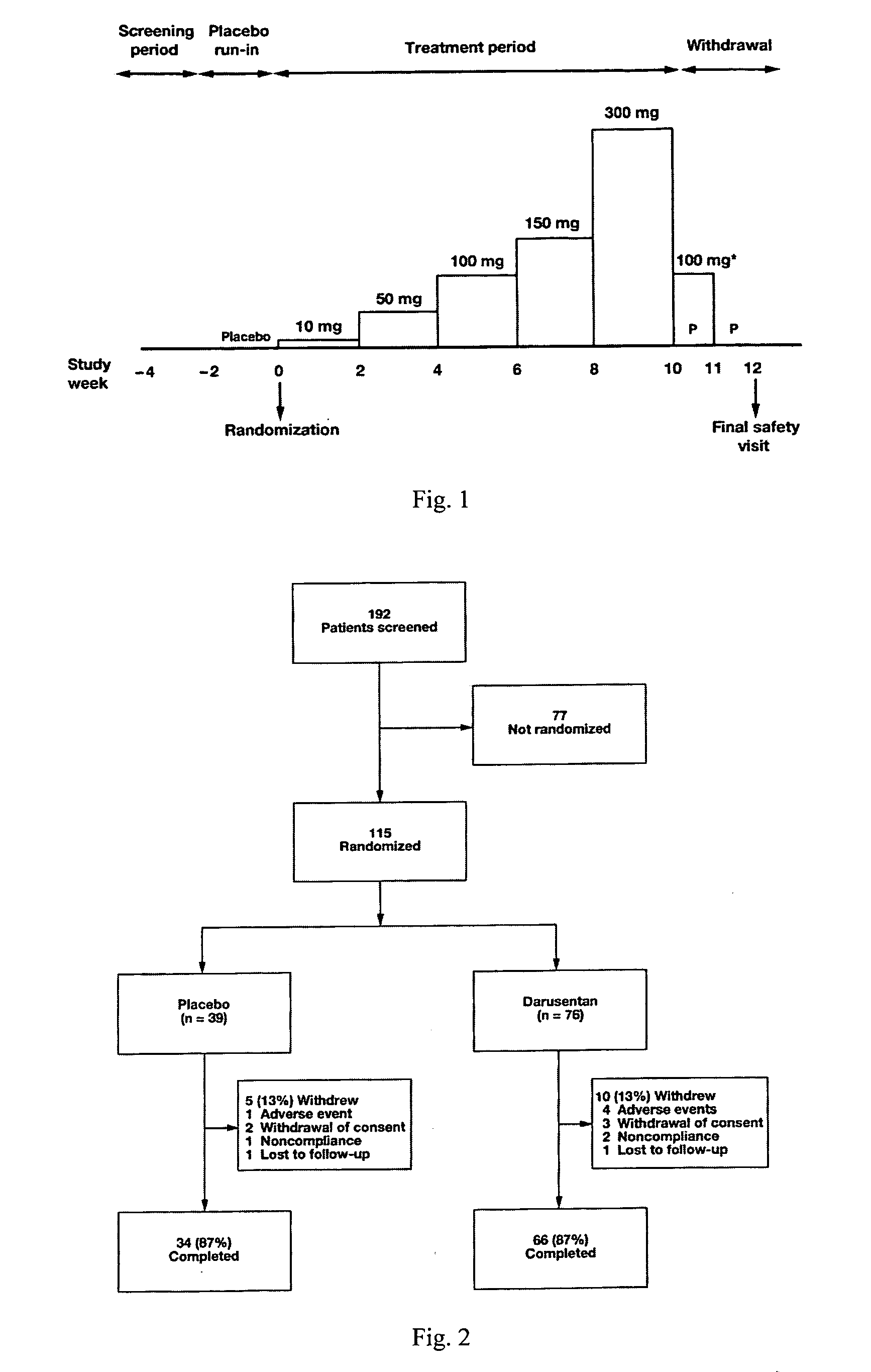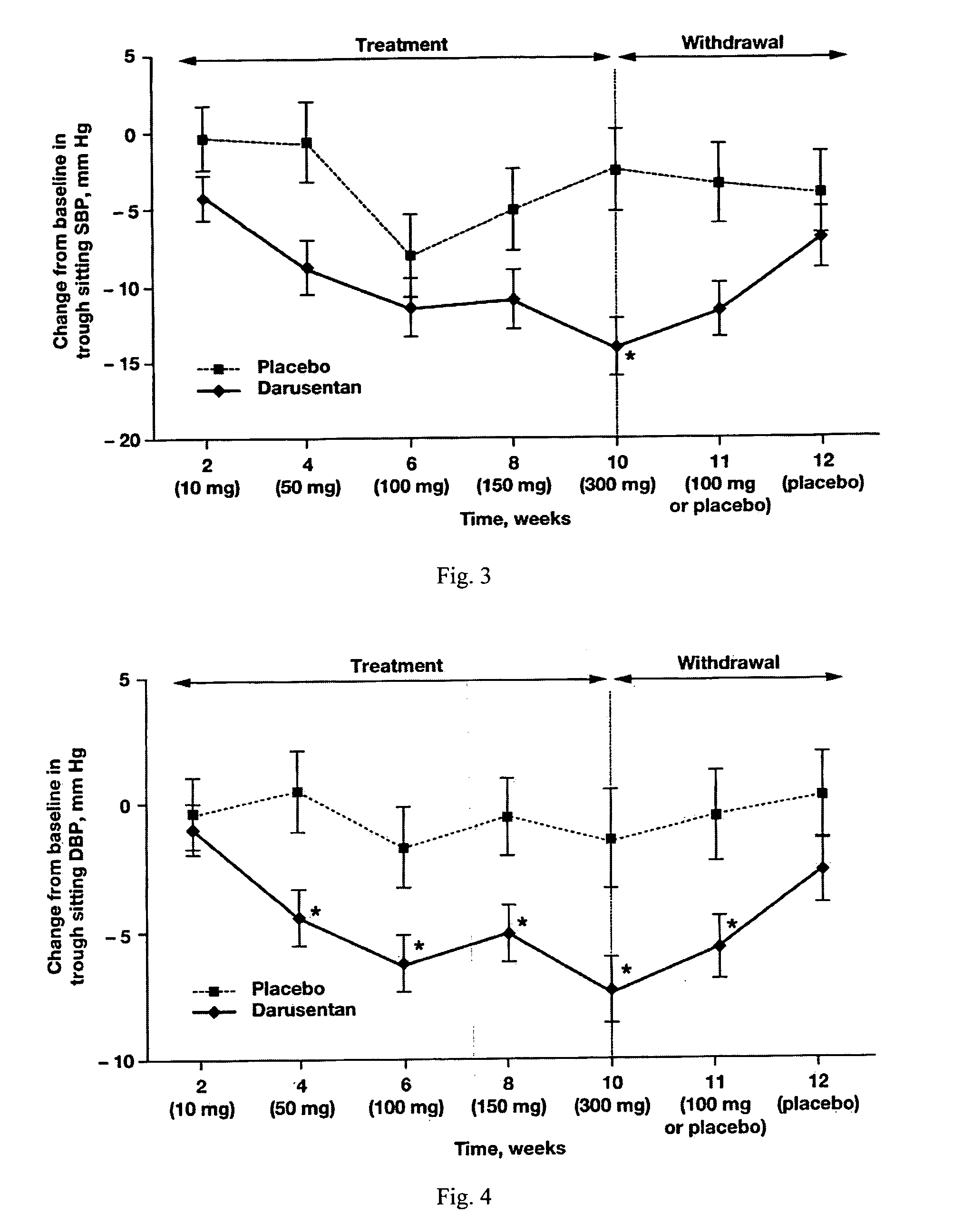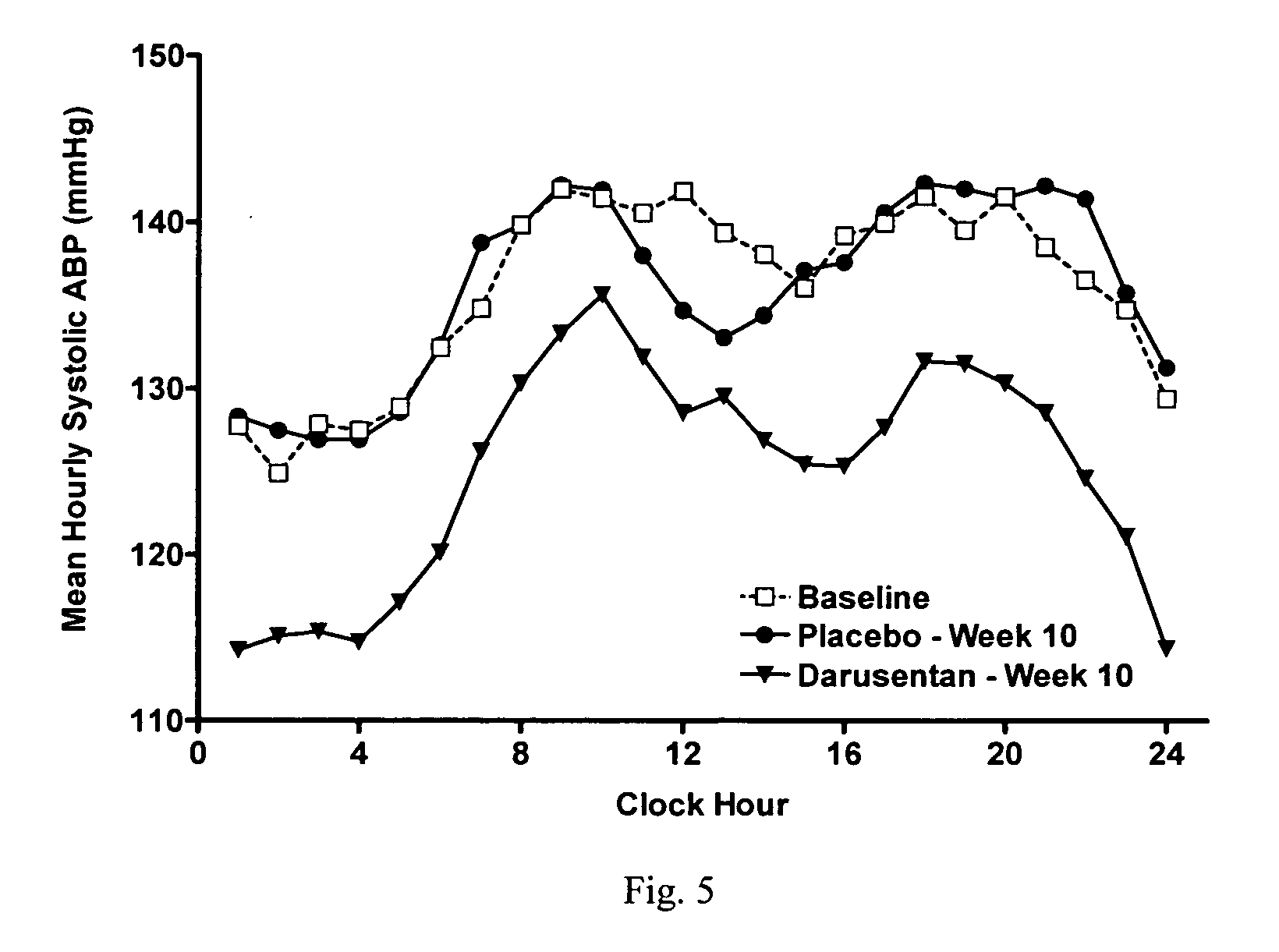Method for treating resistant hypertension
a technology for hypertension and resistance, applied in the direction of biocide, drug composition, cardiovascular disorder, etc., can solve the problem that a large proportion of patients with resistant hypertension fail to achieve blood pressure goals, and achieve the effect of lowering blood pressur
- Summary
- Abstract
- Description
- Claims
- Application Information
AI Technical Summary
Benefits of technology
Problems solved by technology
Method used
Image
Examples
example 1
Summary
[0511]Despite treatment with and adherence to a diuretic plus multiple concomitant antihypertensives at full doses, blood pressure control remains suboptimal in a substantial number of patients with hypertension.
[0512]In this randomized, double-blind, placebo-controlled, dose-titration study, 115 patients with resistant hypertension as defined by JNC 7 guidelines were randomized 2:1 to receive escalating doses of darusentan (10, 50, 100, 150 and 300 mg) or placebo once daily for 10 weeks. Darusentan dose was increased every 2 weeks.
[0513]Darusentan decreased placebo-adjusted mean SBP and DBP from baseline to week 10 (−11.6 and −5.8 mmHg respectively; p<0.05). By the end of treatment, average trough sitting blood pressure decreased from 146.3 / 80.6 mmHg at baseline to 132.6 / 73.9 mmHg in patients treated with darusentan. Darusentan provided 24-hour blood pressure lowering benefits, as evidenced by decreases in 24-hour and nocturnal blood pressures measured by ambulatory blood pr...
example 2
[0543]Based on the study described in Example 1, the following additional statements are made.
[0544]Resistant hypertension is defined by JNC 7 as the failure to achieve goal blood pressure in patients who are adhering to full doses of an appropriate three-drug antihypertensive regimen that includes a diuretic. Darusentan is a selective ETA receptor antagonist, and an objective of the present study is to examine whether darusentan may provide antihypertensive effects via a mechanism of action independent of other classes of antihypertensive drugs when used as adjunctive therapy in patients with resistant hypertension.
[0545]Subjects with resistant hypertension, adhering to a regimen of at least three antihypertensives including a diuretic at documented full doses, were randomized 2:1 to blinded oral darusentan or placebo once daily. Following a 2-week placebo run-in, subjects underwent forced-titration of study drug every 2 weeks through doses of 10, 50, 100, 150 and 300 mg (10 weeks ...
example 3
[0548]Based on the study described in Example 1, the following additional statements are made.
[0549]Darusentan is an ETA-selective endothelin receptor antagonist that has now been demonstrated to produce clinically and statistically significant reductions in trough sitting blood pressure, as measured by standard sphygmomanometry, in 115 patients with resistant hypertension receiving documented full doses of at least three antihypertensive drugs, including a diuretic. In this randomized, double-blind, multi-center study, subjects underwent a 2-week placebo run-in, followed by 2:1 randomization to darusentan or placebo once daily for 10 weeks. Subjects were initiated on 10 mg of study drug and underwent dose-escalation every 2 weeks through doses of 50, 100 and 150 mg until a maximum dose of 300 mg was achieved. Change from baseline to week 10 in 24-hour ambulatory blood pressure (ABP) was a secondary efficacy endpoint. All available ABP data were included in the analyses (observed po...
PUM
| Property | Measurement | Unit |
|---|---|---|
| Pressure | aaaaa | aaaaa |
| Mass flow rate | aaaaa | aaaaa |
| Mass flow rate | aaaaa | aaaaa |
Abstract
Description
Claims
Application Information
 Login to View More
Login to View More - R&D
- Intellectual Property
- Life Sciences
- Materials
- Tech Scout
- Unparalleled Data Quality
- Higher Quality Content
- 60% Fewer Hallucinations
Browse by: Latest US Patents, China's latest patents, Technical Efficacy Thesaurus, Application Domain, Technology Topic, Popular Technical Reports.
© 2025 PatSnap. All rights reserved.Legal|Privacy policy|Modern Slavery Act Transparency Statement|Sitemap|About US| Contact US: help@patsnap.com



